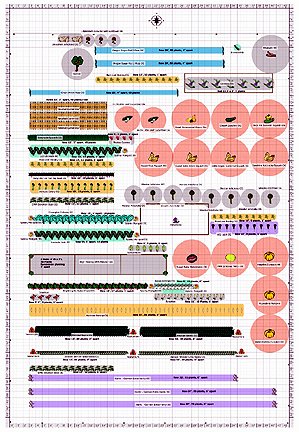
It all starts with making a garden plan. This is assuming you have selected a garden plot and know the exact dimensions. I use this website to create the plan. It’s pretty important to not plant the same type of plant or family of plant in the same place each year. Doing so will encourage pests and diseases. This program follows your plans from year to year and can tell you when you last planted a plant or family type in the selected area. It’s an enormous help for me as I have 3 big gardens to keep track of.
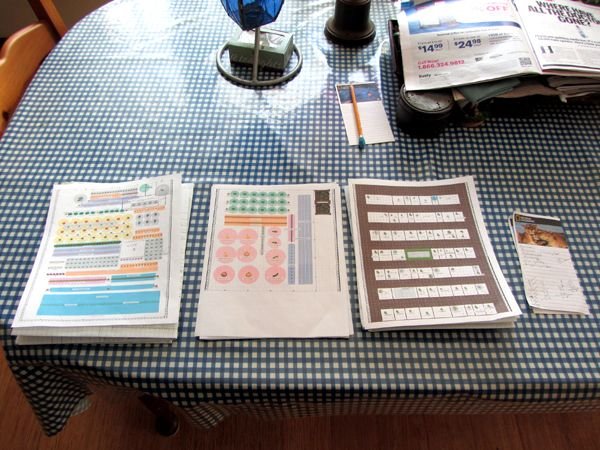
But these printed plans are pretty useless in the garden. If they get wet, they smear, and you can’t make changes.
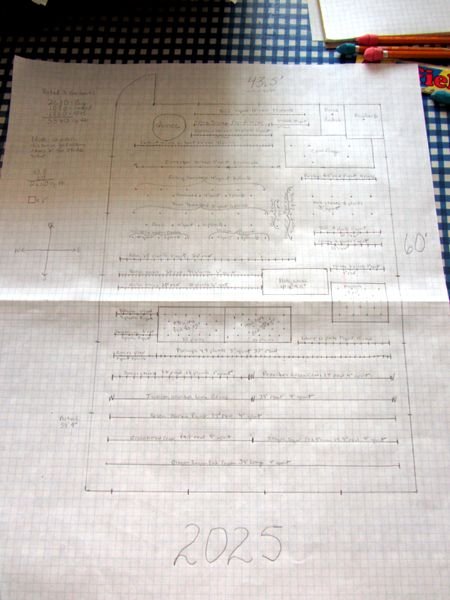
So from the computer copy, I make a graph paper copy in pencil. It has all the information I need on it:
Plant variety
Plant spacing
Row spacing
Row length
Precise size of garden
Perennial plant placing
Cardinal points
Square footage of entire garden
Date of plan
Once this is done, it’s time to see what I have in inventory for seeds. I often have someone with good handwriting to write in the info, but not this year.
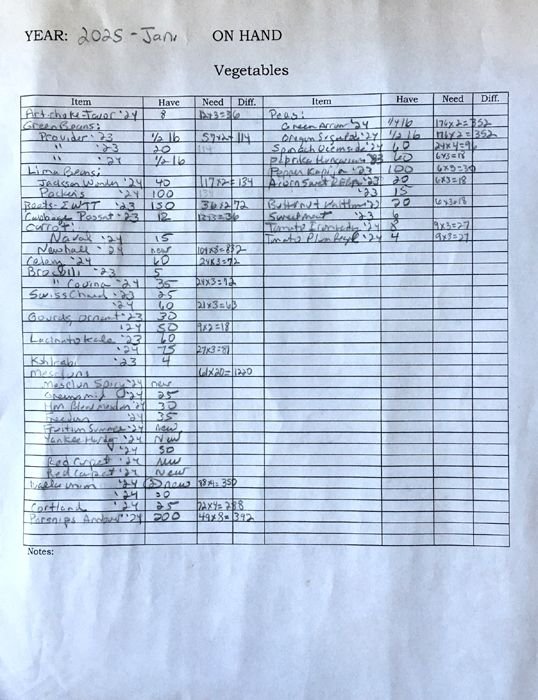
I made this form and it lists the type and variety of seed, a count of the seeds in the packet, how much seed I need for the year, and what I need to buy. I have separate forms for the flowers and the herbs.
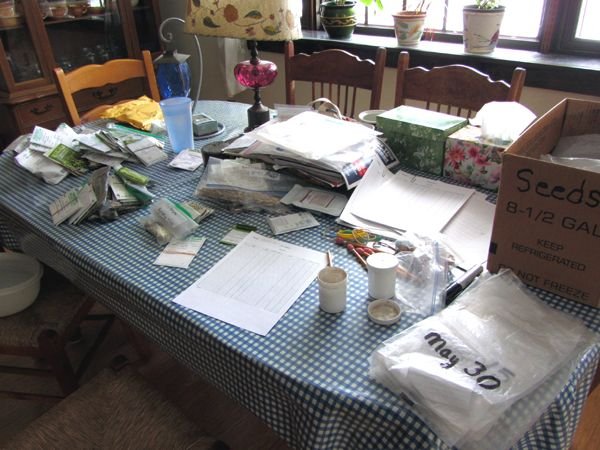
While I am inventorying the seeds, I put them in alphabetical order. Once inventoried in alphabetical order (which makes them easier to find) and still in alphabetical order, I get out the appropriate chart and the date-labeled seed bags for seed starting. I have separate bags each type: vegetables, flowers, herbs. All the dates for vegetables go in the vegetable bag, etc.
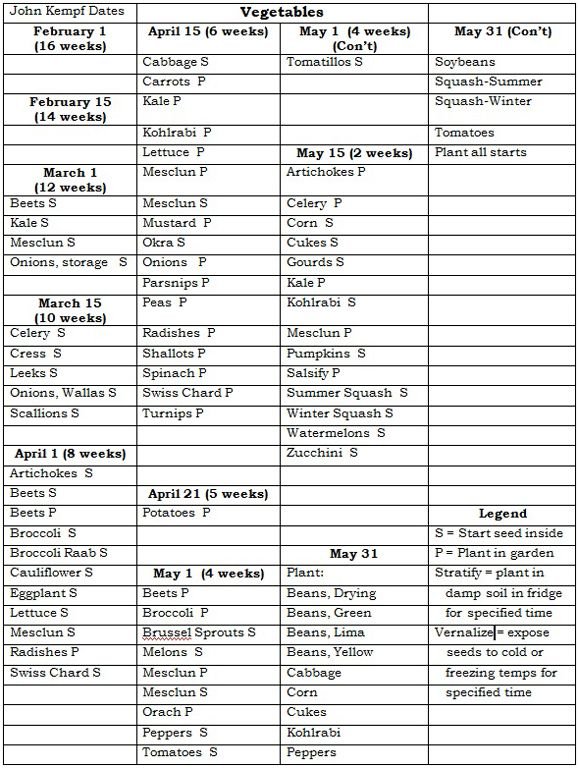
I created these charts after years of notes. For my area, 4a in New England, these are the dates I start things for a June 1 planting, after last frost of May 31.
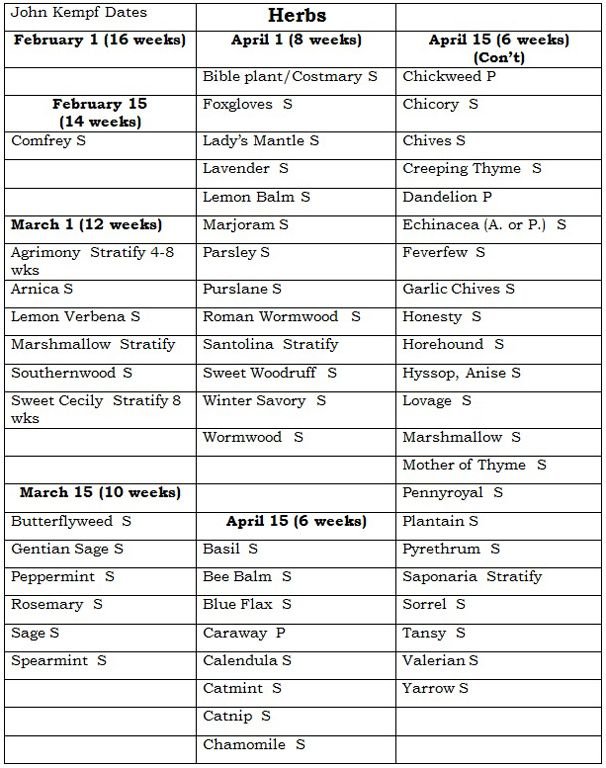
You may have noticed it says “John Kempf Dates” at the top. John Kempf has been a big influence in how I grow plants. He says the less stressors you put on seedlings, the higher the production. He says if it’s possible, to not keep seedlings in pots past 3 weeks of sprouting. It lessens the transplant shock. So many, but not all, of these dates reflect this.
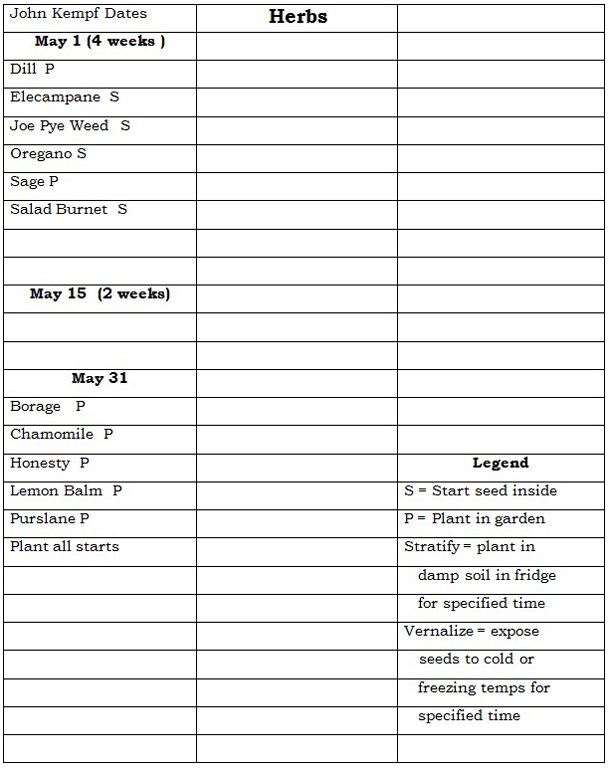
These only include plants I have actually tried to grow at some point.
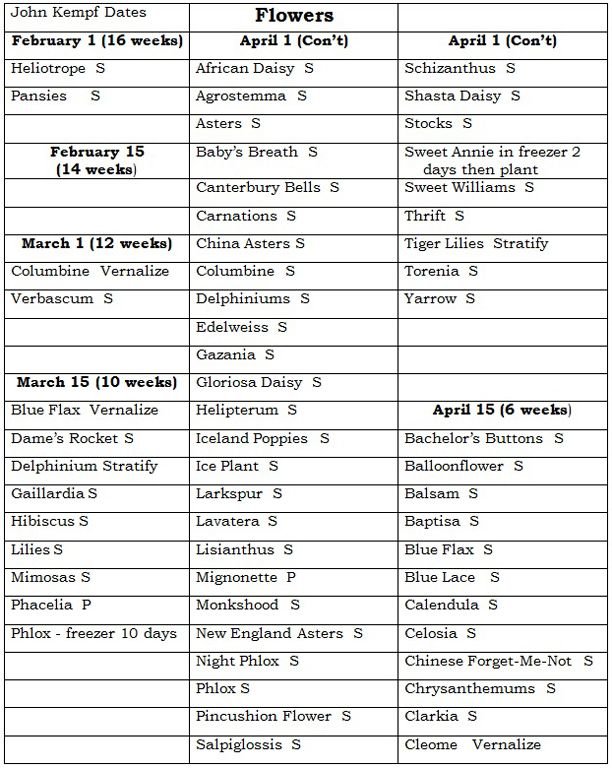
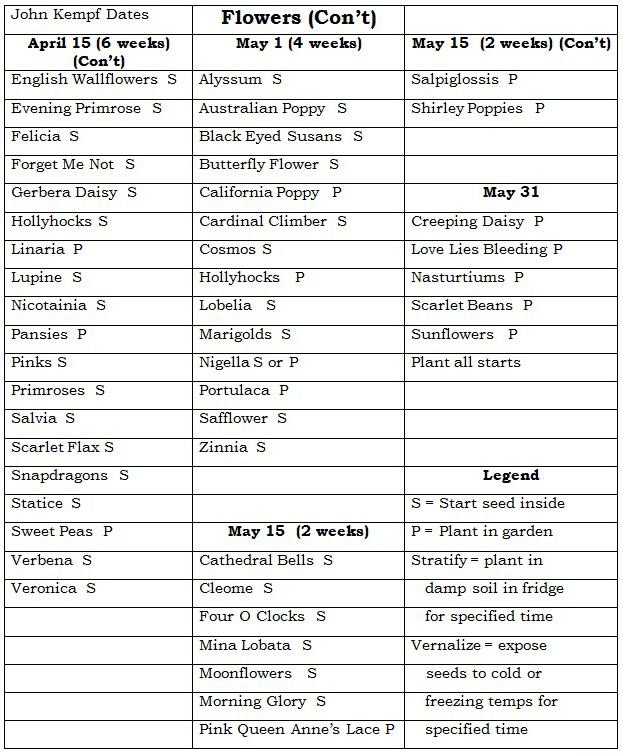
Once the seed packets are correctly filed away, I can finally start figuring out what I need for seed. I take the information from the handwritten plans and put it into the inventory.
Next I make lists of each type of seeds (veg, herb, flower) and how many seeds need to be ordered. I found it easier to make orders from these lists, as they ONLY have what I am growing this year, not ALL the seeds I have.
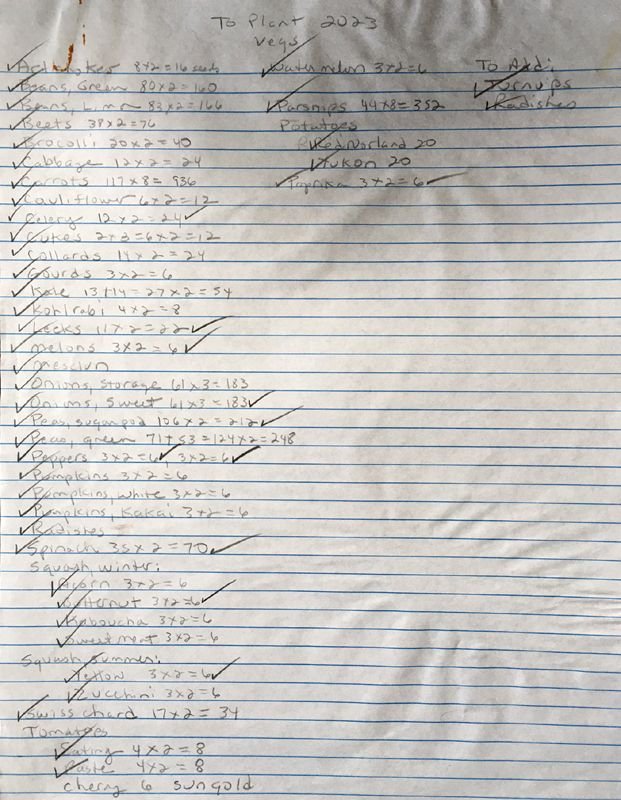
And even though you can see I double checked, I still inevitably forget to order something. This year it was portulacas and lobelia, something I plant EVERY year. That was because I was out of seed for those 2 and forgot to add them to the list to order.
Once this list is made, I start going through the catalogs looking for the best organic seed at the best prices and the largest quantity of seed per packet.
I used to write out my orders and mail them in, but I’ve joined the 21st century and now use the websites. But I copy and paste everything I order into a hard copy and this is why:
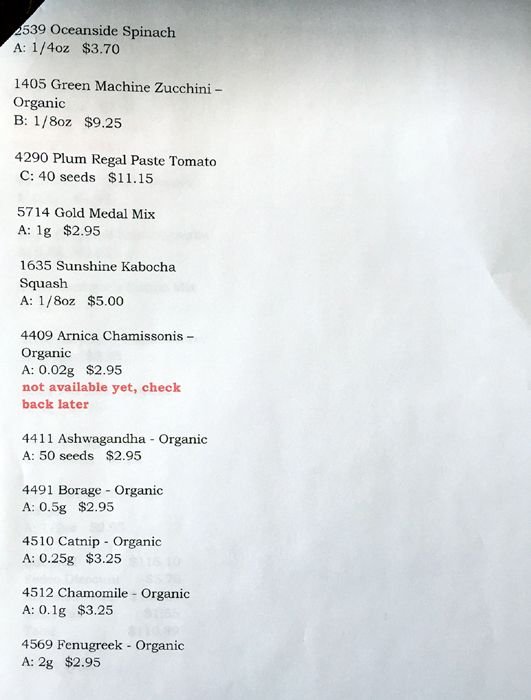
If I hadn’t been cutting and pasting, I wouldn’t remember this item wasn’t ordered.
It’s a lot of paperwork to get the seeds ordered, but I have paper references I can check because I have poor memory.
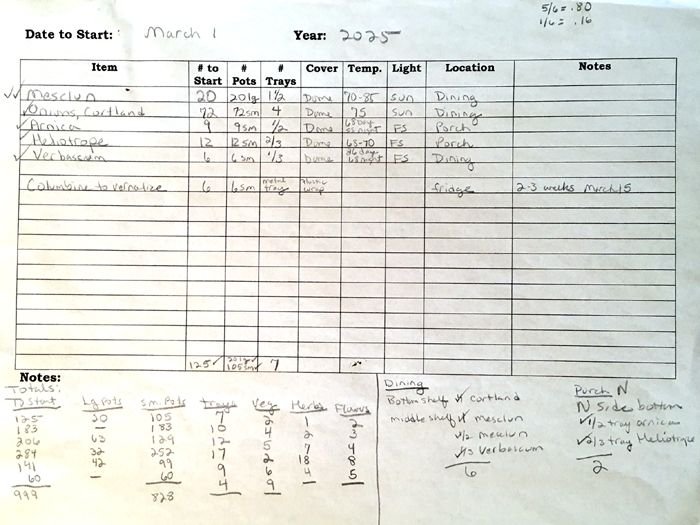
Next I get this form out and fill out one for each starting date, the 1st and 15th of each month in March, April and May. This has all the information I need about each plant to insure it’s started optimally. I also total from each of the 6 sheets.
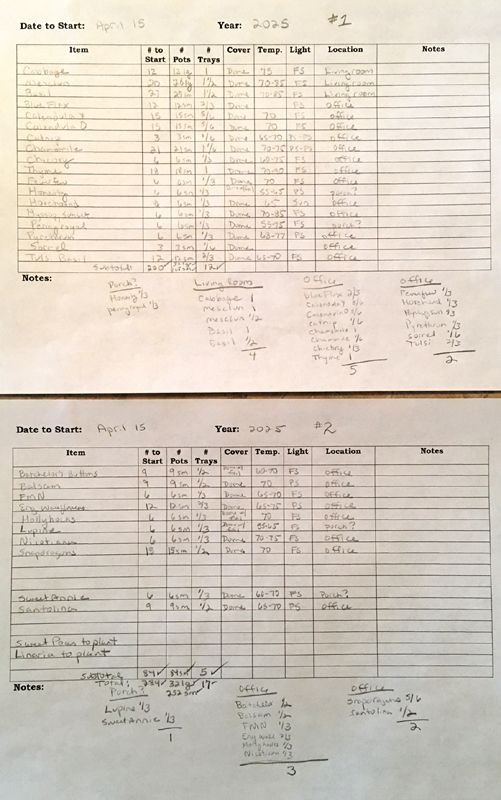
Some startings aren’t a lot, like March one. But the April 15th starting is always huge and there’s been times when we broke it up over 2 days.
Once the orders are done, the starting charts are made, and before I put all the forms away, the last thing I do in preparation for the first seed starting is go through all the forms like this one:
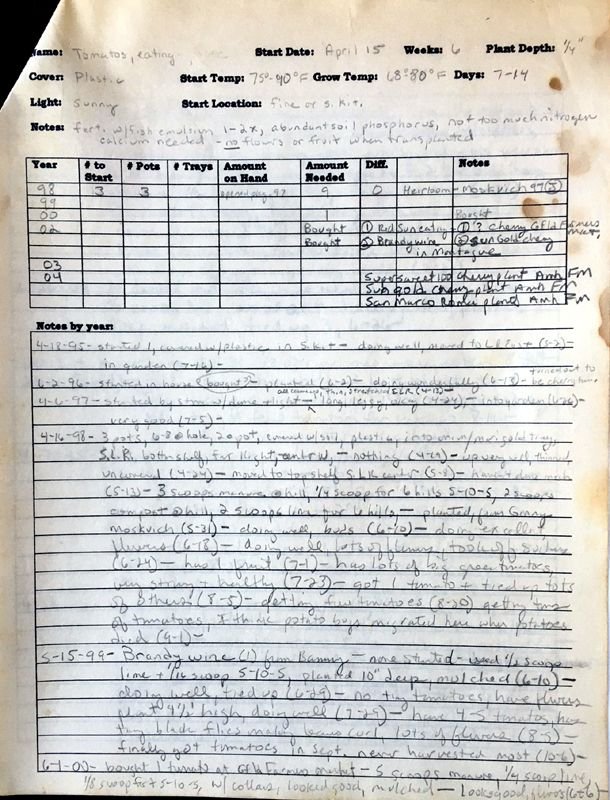
From the list of plants to be planted, I make sure I have the Starting Notes sheet for that plant filed alphabetically in the Starting Forms file folder. As I have literally 100’s of different plants I start or grow each year, this is what I use to file them:
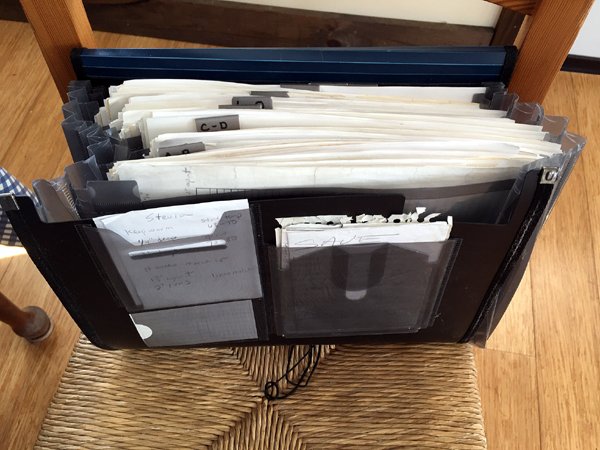
If you look at the form for tomatoes, you might have noticed it was started April 18, 1995. I have always kept notes on what I grew and how it did.
I will take out plants I’m not starting or growing this year, and put in ones I am. When I handle each form, I check to make sure there’s enough room left on the newest one for the coming year’s information. If not, I add a new sheet. Some of these forms have 10 sheets! And some are just a single one.
Once this job is done, I am ready for seed starting. So that’s the process and the forms I use to get through it.
Thank you for posting so many details! Many years ago I read a book about companion planting and carefully planned out the rows in the garden so everything was next to something it liked. Each year I would shift the rows by one crop, so nothing was planted in the same spot. It seemed to work well. Then my husband decided we should try square foot gardening, and that messed up my system, but we plugged away with that for several years. Now all the wooden "squares" are gone, and I'm back to rows, except for the vine crops, which I've been planting in holes in weed barrier cloth so they can spread all over. I'd like to try growing those things on a fence, like peas; I've heard cucumbers and squash do quite well like that. But I just can't picture a huge pumpkin or Hubbard squash dangling off a section of cattle panel.
Your comment is upvoted by @topcomment
More info - Support @topcomment - Discord
I do a small amount of companion planting, mostly marigolds, nasturtiums , and horehound.
So you practically write out the plan for the seeds. That makes sense though and I love how you plant your seeds
Nice!
Is it a must you label the seeds alphabetically before planting them?
It makes finding them so much easier... I just don't have the energy or time to keep searching for something.
#hive #posh
That's really a lot of work, you put a lot of effort on this! Rotation of seeding is a must, my grandparents did the same
You are definitely doing a very great job and I am so sure that it must not have been so easy for you